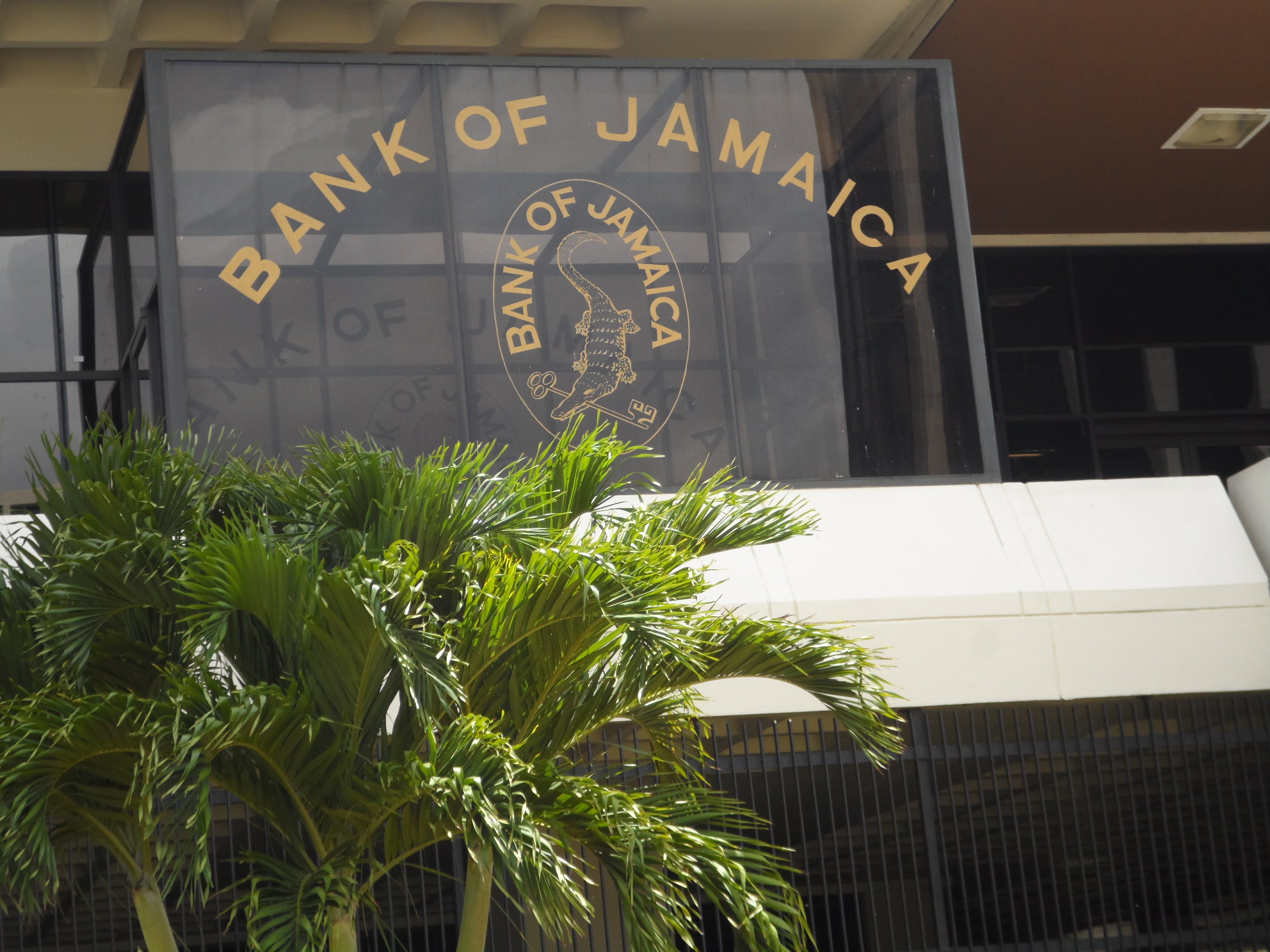 Bank of Jamaica will be opening its foreign exchange auction – BFXITT on Wednesday to the buying US dollars for the first time .
Bank of Jamaica will be opening its foreign exchange auction – BFXITT on Wednesday to the buying US dollars for the first time .
The central bank that started the auction in July last year has only sold the US dollar to dealers buy will commence buying of US$5 million this week, in their once a week auction. The bank will be buying US$12 million April 18 and US$15 million on April 25. The bank that announces a forward 4 week schedule for the auction, has no trading scheduled for the start of May.
The buying of the US dollars in the auction comes against the back ground of revaluation of the local dollar to $125 on Tuesday, after slipping in value to just over $128 to the US dollar in March. 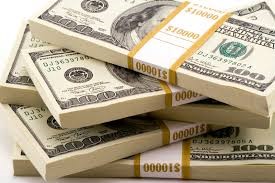 At a recent briefing relating to the commencement of buying through the BFXITT system as part of dissemination information, the Governor of the central bank, Brian Wynter indicated that the decision to buy or sell is based on market intelligence provided by the dealers through their customers.
At a recent briefing relating to the commencement of buying through the BFXITT system as part of dissemination information, the Governor of the central bank, Brian Wynter indicated that the decision to buy or sell is based on market intelligence provided by the dealers through their customers.
The commencement of buying of foreign currency through BFXIIT auction, also comes at a time that the central bank has reduced the percentage that it takes from the daily inflows into the market and the planned phasing out of compulsory surrender requirement by authorised dealers.
BOJ cuts planned FX auction sale
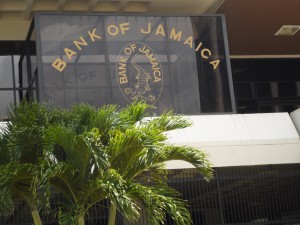 Bank of Jamaica (BOJ) is cutting the amount it is committed to sell in its weekly foreign exchange auction B-FXITT, to US$29 million over the next four weeks.
Bank of Jamaica (BOJ) is cutting the amount it is committed to sell in its weekly foreign exchange auction B-FXITT, to US$29 million over the next four weeks.
The announced sale, is down from US$40 million that BOJ made available to Authorised Dealers and Cambios from the last Wednesday in September up to last week at US$10 million weekly. The amount to be sold this Wednesday will be US$10 million even as dealers have been selling off surplus foreign currencies, leading to an appreciation of the local currency since September. For the first two weeks of November US$7 million will be available, followed by US$5 million.
The amount to be sold is a fraction that the central bank will be buying from the system under the compulsory surrender requirement set by BOJ.
Ending FX surrender requirements
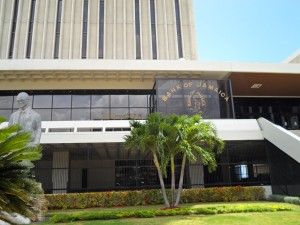
Jamaica’s Central Bank head quarters Downtown Kingston
The present arrangement where Bank of Jamaica requires foreign exchange dealers to surrender around 25 percent of their daily intake is to be phased out.
The central bank now considers the market deep and liquid enough for government entities to go directly into the market for their needs.
According to Bank of Jamaica, “the introduction of the buying side of B-FXITT will be synchronized with the gradual reduction of surrender and PSE requirements, and over time, these requirements will be terminated. This gradual transition will see more funds available in a more dynamic and transparent market.” Starting July 26, the central bank formally introduced an auction system for foreign exchange trading. The initial stage is the introduction of selling of funds to the market.
Bank of Jamaica (BOJ) currently purchases foreign exchange via three channels: regular surrender arrangements, the public sector entity (PSE) facility, and occasional direct purchases from individual financial institutions. The PSE facility in particular was considered a useful initiative to remove potentially distorting transactions from the foreign exchange market, but the central bank states that it is not flexible or synchronized enough to respond proportionately if a large entity experiences a sudden change in its foreign exchange needs. Also, while it began as a safeguard mechanism to protect a shallow and fragile market, the facility came with the price of a loss of transparency. Taking these and the surrender transactions out of the mainstream market means the market rate does not reflect the entire spectrum of foreign exchange transactions.
 BOJ says that “with economic fundamentals improving and the foreign exchange market growing deeper, Jamaica is evolving towards a stage where the market is robust enough to handle these transactions without BOJ’s protection, and so these government agencies can freely settle their transactions in the market without causing disruptions. The market will therefore become more accurate and transparent by reflecting all major transactions, and daily rates will be a more accurate and credible reference of overall market activity.”
BOJ says that “with economic fundamentals improving and the foreign exchange market growing deeper, Jamaica is evolving towards a stage where the market is robust enough to handle these transactions without BOJ’s protection, and so these government agencies can freely settle their transactions in the market without causing disruptions. The market will therefore become more accurate and transparent by reflecting all major transactions, and daily rates will be a more accurate and credible reference of overall market activity.”
These pending changes mean that BOJ’s standard method of buying foreign exchange will become the what the central bank states is the “same efficient, market-friendly and transparent tool which it now uses to sell”. “BOJ says it “will retain the right to buy or sell foreign exchange outside of the standard B-FXITT schedule at any time if extraordinary conditions warrant, but will likely utilize a B-FXITT-type operation at those times instead of bilateral transactions, which will ensure that these transactions reflect current market conditions and are settled transparently at market-determined rates. BOJ’s avoidance of bilateral transactions will also benefit the market by encouraging dealers to trade more among themselves.”
J$127.77 mid-day rate for US$
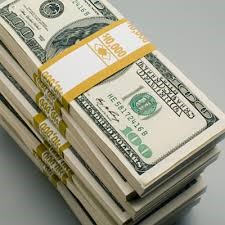 Authorised dealers bought US$9,913,199 at an average rate of J$127.137 up to mid day on Thursday and sold US$5,243,960.45 at an average of J$127.769.
Authorised dealers bought US$9,913,199 at an average rate of J$127.137 up to mid day on Thursday and sold US$5,243,960.45 at an average of J$127.769.
On Wednesday at midday, the selling rate of the US dollar was $127.85, with US$12 million being sold. In Thursday’s session dealers bought C$6,640,074 at J$102.817 each and sold just C$98,944.26 up to the same time.
Forex demand drops
 The number of bids posted in the Bank of Jamaica B-FXITT auction on Wednesday dropped from 42 bids totaling $62.6 million last week, to 36 this week for only US$20.55 million this week.
The number of bids posted in the Bank of Jamaica B-FXITT auction on Wednesday dropped from 42 bids totaling $62.6 million last week, to 36 this week for only US$20.55 million this week.
The central bank made US$10 million available for purchase on Wednesday this week, 18 bids were accepted, with rates ranging from $130.05 to $130.50, with the latter for US$1.2 million. The average rate came out at $130.28, down from an average of rate of J$131.36 last week.
Bank of Jamaica sold US$30 million in last week’s auction on Wednesday to eligible Authorised Dealers and Cambios.
BOJ forex auction clears at J$131.36
 Bank of Jamaica sold US$30 million that it auctioned on Wednesday, September 20, to eligible Authorised Dealers and Cambios, at an average of rate of J$131.36 to one US dollar.
Bank of Jamaica sold US$30 million that it auctioned on Wednesday, September 20, to eligible Authorised Dealers and Cambios, at an average of rate of J$131.36 to one US dollar.
The central bank received 42 bids totaling $62.6 million of which 17 were successful, in its B-FXITT Standard Intervention Tool. The highest bid rate was $131.80 to purchase US$3 million, with the lowest being $121.28 to buy US$1 million.
At the auction, last week Wednesday, a total 45 bids amounting to US$60.9 million chased, the $20 million Bank of Jamaica offered for sale, resulting in an average rate of $131 to buy the US dollar on offer. The auction’s highest bid then was $131.10 to purchase US$2.3 million.
Dealers bid up rates at BOJ FX auctions
 Bank of Jamaica introduced a new system in providing foreign exchange to the local market by offering a weekly amounts for sale, in the first instance. In the latest offering the average rate climbed to $131 as demand exceeded the amount on offer.
Bank of Jamaica introduced a new system in providing foreign exchange to the local market by offering a weekly amounts for sale, in the first instance. In the latest offering the average rate climbed to $131 as demand exceeded the amount on offer.
Later on, presumably in the winter months, when inflows are much higher then, the auction will accommodate both buying and selling, with the central bank buying or selling as the circumstance dictates.
AT the auction, last week Wednesday, a total 45 bids amounting to $60.9 million chased, the $20 million Bank of Jamaica offered for sale, resulting in an average rate of $131 to buy the US dollar on offer. The auction highest bid was $131.10 to purchase US$2.3 million. In the previous week’s auction, BOJ offered US$10 million that attracted 43 bids amounting to US$29.1 million, with the highest rate at $130.50 to buy $1 million. Bank of Jamaica on Thursday, August 31, had a special unscheduled offer of $35 million available to the market pulling in 31 bids amounting to US$70.2 million chasing the offer. The next auction will see BOJ auctioning off US$30 million this week Wednesday as announced at the start of the month.
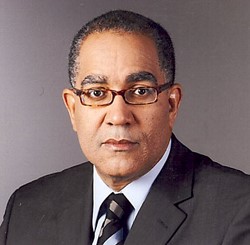
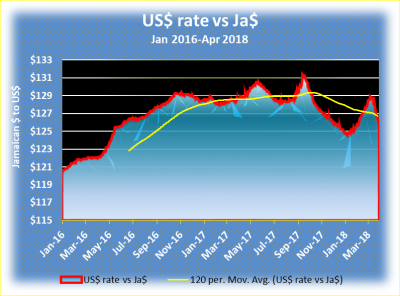

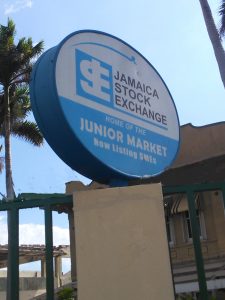 The Jamaican dollar has been trading within a band of J$125 to 130 to the US dollar, a situation Wynter sees as likely to be the norm for sometime to come. Wynter who was speaking at special briefing on Friday, indicated that Jamaicans had better start getting used to this new development as there is enough foreign currency available in the system. A development which he things the new foreign exchange auction B-Fxitt, that the central bank manages has helped to foster with much more transparency in the market aided by market intelligence by both buyers and sellers as well as the central bank. But the new B-Fxitt is not the only factor at play. Not only that, according to the governor even as the bank cut the compulsory take form dealers by 10 percentage points, BOJ has not suffered lower intake as a result of increased flows, some of which Wynter attributes to the selling of US dollars by locals to go into more profitable form of local investments. Government’s tight fiscal discipline has gone a long way to creating and environment of stability within the economy and among the business sector.
The Jamaican dollar has been trading within a band of J$125 to 130 to the US dollar, a situation Wynter sees as likely to be the norm for sometime to come. Wynter who was speaking at special briefing on Friday, indicated that Jamaicans had better start getting used to this new development as there is enough foreign currency available in the system. A development which he things the new foreign exchange auction B-Fxitt, that the central bank manages has helped to foster with much more transparency in the market aided by market intelligence by both buyers and sellers as well as the central bank. But the new B-Fxitt is not the only factor at play. Not only that, according to the governor even as the bank cut the compulsory take form dealers by 10 percentage points, BOJ has not suffered lower intake as a result of increased flows, some of which Wynter attributes to the selling of US dollars by locals to go into more profitable form of local investments. Government’s tight fiscal discipline has gone a long way to creating and environment of stability within the economy and among the business sector. So where is the stock market in all of this? The junior market is up 8 percent year to date, but main market stocks have just crawled a mere 3 percent, the latter wont being performing so poorly much longer. This short term chart shows two channels that the market is trading within. The market is trading closer to the upper resistance line shown in red. The lower blue line has been steering the market slightly side wards with an upward bias. A very important feature, which is not shown in the attached chart, is an extremely bullish formation shown on a longer term chart. That chart shows the market now caught up in a wedge formation with the top being around 335,000 points using the all Jamaica Composite index. With the recent market moves, it appears that the wedge is going to give way and herald a huge rise upwards in the market and that in going to happen within a few weeks, probably after first quarter results are released starting in late April.
So where is the stock market in all of this? The junior market is up 8 percent year to date, but main market stocks have just crawled a mere 3 percent, the latter wont being performing so poorly much longer. This short term chart shows two channels that the market is trading within. The market is trading closer to the upper resistance line shown in red. The lower blue line has been steering the market slightly side wards with an upward bias. A very important feature, which is not shown in the attached chart, is an extremely bullish formation shown on a longer term chart. That chart shows the market now caught up in a wedge formation with the top being around 335,000 points using the all Jamaica Composite index. With the recent market moves, it appears that the wedge is going to give way and herald a huge rise upwards in the market and that in going to happen within a few weeks, probably after first quarter results are released starting in late April.






